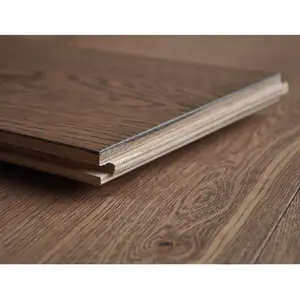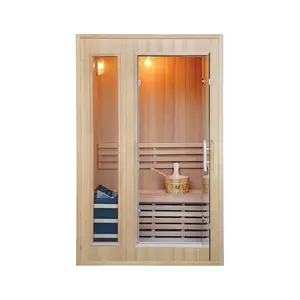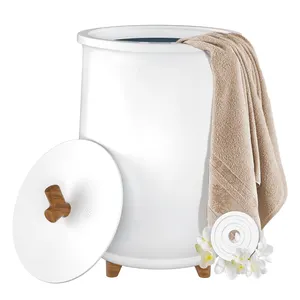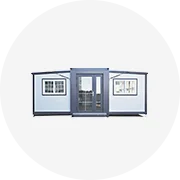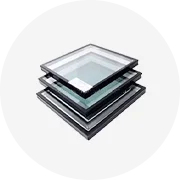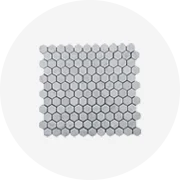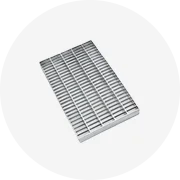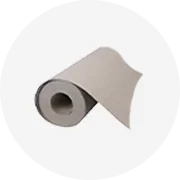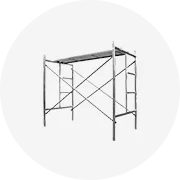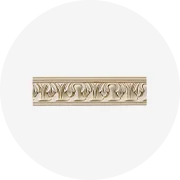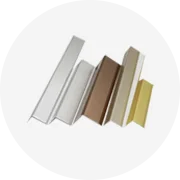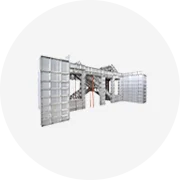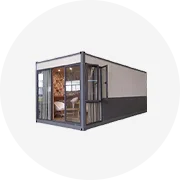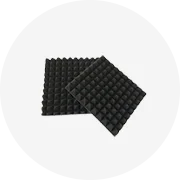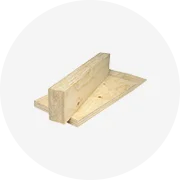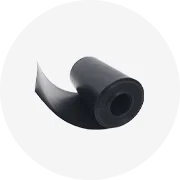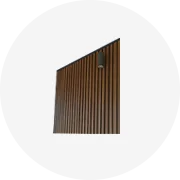Popular in your industry






New Design 3D Printing Interior Decoration Tv Background Marble PVC Wall Panel Sheets
$23.70 - $27.70
Min. Order: 200 pieces
0.0/5.0·0 reviews

Indoor Decorative Popular Design Aluminum U-shape Ceiling Title Metal Suspended Profile Ceiling Panel
$14.50 - $55.00
Min. Order: 50 pieces
5.0/5.0·2 reviews·"Good service"










Brand New High Quality Copper Hollow Art Curtain Wall With Most Popular
$139.00 - $199.00
Min. Order: 10 square meters
5.0/5.0·2 reviews






Hot Philippines Coowin Qingdao Decorative Board Home Interior Decor Wpc Wall Panel Indoor
$0.95 - $1.03
Min. Order: 10 meters
5.0/5.0·18 reviews·"customer service"






SSR VINA - Base Board - White Pine Primed Board Skirting Moulding Custom Baseboard Moulding For Home Diy Decorations
$600.00 - $750.00
Min. Order: 20 cubic meters
0.0/5.0·0 reviews
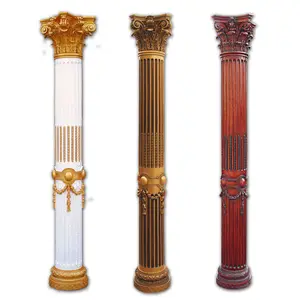





Banruo Factory Price Classic Style Roman Column Mould Quality Roman Pillar Column Mold For Interior Decoration
$180.00 - $190.00
Min. Order: 10 pieces
4.9/5.0·10 reviews·"professional supplier"





Interior Roman Marble Stone Pillars Columns
$500.00
Min. Order: 1 piece
2.8/5.0·21 reviews·"Excellent work"





Customization Hotel Interior Decoration Design Pillar Statue Greek Marble Natural Stone Column for Sale
$500.00 - $2,658.00
Min. Order: 1 piece
4.8/5.0·6 reviews·"excellent service"





European Style Modern Decorative Large Stone Pillars Column Prices Marble Roman Column For Interior House
$899.00 - $2,988.00
Min. Order: 2 sets
5.0/5.0·1 reviews





Decoration Marble Interior Column
$100.00 - $1,000.00
Min. Order: 5 sets
5.0/5.0·1 reviews·"Fast delivery"





Wholesale flat roman column flat PU Roman Pillar for interior decoration
$5.00 - $30.00
Min. Order: 50 pieces
5.0/5.0·1 reviews·"good service"Related Searches:




Corinthian order luxury interior ornament stone marble columns for home villa building decoration
$350.00 - $800.00
Min. Order: 1 piece
5.0/5.0·1 reviews·"good service"





Home Interior Decoration Large Size Natural Marble Columns For Sale
$300.00 - $1,500.00
Min. Order: 2 pieces
4.8/5.0·2 reviews·"AWESOME service"





High Polished Marble Pillar or Column for Interior Room Decoration
$1,200.00 - $1,900.00
Min. Order: 2 sets
5.0/5.0·4 reviews·"good job"











Factory price high-end interior decor granite column for outdoor garden villa decorative pillars and columns
$219.99 - $259.99
Min. Order: 1 piece
0.0/5.0·0 reviews





Decorative Interior Roman Columns Light Weight For Sale
$80.00 - $120.00
Min. Order: 20 pieces
4.9/5.0·11 reviews·"fast shipping"
pure white decorative interior stone columns
$20.00 - $88.00
Min. Order: 20 sets
0.0/5.0·0 reviews·"Fast shipping"





Nature Hollow Honey Onyx Column For Wedding Hall Room Interior Decoration
$800.00 - $2,000.00
Min. Order: 5 pieces
5.0/5.0·4 reviews





Interior Decorative Marble Stone Porch Columns Design For Sale
$800.00 - $1,000.00
Min. Order: 1 piece
0.0/5.0·0 reviews





HZ Decovision European style Roman Pillar Greek Column for interior decoration
$123.74 - $147.31
Min. Order: 100 pieces
0.0/5.0·0 reviews





Fashion Stair Railing Columns Interior Decorative Pillar For Sale
$500.00 - $6,500.00
Min. Order: 2 pieces
4.9/5.0·5 reviews·"great job"

High Density Architectural Polyurethane Columns for Interior Exterior Decoration Waterproof PU Foam Roman Columns Roman Pillars
$46.00 - $47.00
Min. Order: 100 pieces
5.0/5.0·3 reviews





Building Interior Wall Decoration Golden Plaster Gypsum Pillar Column For Sale
$50.00 - $500.00
Min. Order: 100 square meters
5.0/5.0·1 reviews·"Great supplier"





Classic Design Hand Carved Interiors Homes Marble Columns for Decoration
$800.00 - $1,380.00
Min. Order: 2 pieces
5.0/5.0·5 reviews·"outstanding service"





italian decorative interior marble column pillars square house pillar design for building decorative
$764.00 - $1,792.00
Min. Order: 10 square meters
5.0/5.0·5 reviews





Marble pillar and columns for interior natural stone columns indoor decorative pillars
$99.00 - $499.00
Min. Order: 1 piece
5.0/5.0·1 reviews·"Terrific service"





Onyx Marble Pillar Interior Column Marble Column Cover White Marble Cladding Column
$10.00 - $13.00
Min. Order: 10 square meters
4.5/5.0·1 reviews





High quality marble pillars and columns building design with interior decorative pedestal
$150.00 - $180.00
Min. Order: 20 square meters
4.6/5.0·1 reviews·"professional supplier"





Interior decoration white marble wall tiles roman column wall panel decoration
$599.00 - $3,999.00
Min. Order: 2 square meters
5.0/5.0·5 reviews·"fast shipping"





Led Interior Column Frosted Acrylic Pedestal (Ta110A)
$27.00 - $30.00
Min. Order: 2 pieces
4.8/5.0·9 reviews·"good company"
PU roman corinthian columns for interior decoration
$2.00 - $30.00
Min. Order: 50 pieces
5.0/5.0·1 reviews·"professional supplier"





PFM interior decorative natural stone marble pillars and columns
$900.00 - $1,500.00
Min. Order: 1 set
5.0/5.0·3 reviews





Customize natural stone capitals interior decorative hollow columns
$135.00 - $143.00
Min. Order: 20 pieces
5.0/5.0·5 reviews·"good service"
Solid Black Marble Interior Decoration Column
$100.00 - $2,000.00
Min. Order: 1 piece
0.0/5.0·0 reviews·"Excellent job"


House interior and exterior decoration beige pillar stone roman column design with base
$200.00 - $2,000.00
Min. Order: 1 piece
0.0/5.0·0 reviews·"responsible supplier"




Classic Interior Decorative Marble Columns
$400.00 - $2,560.00
Min. Order: 1 piece
4.7/5.0·36 reviews·"professional service"





Wholesale house interior and exterior decoration beige pillar stone roman column design with base
$150.00 - $1,900.00
Min. Order: 2 pieces
5.0/5.0·2 reviewsTop categories
About columns for interior decorating
Are you a decor enthusiast who believes that slight touch of glamour is what truly completes a project? Then these beautiful and elegant columns for interior decorating at Alibaba.com are perfect for you to consider. These durable and finely crafted columns for interior decorating serve as the best alternatives to artificially decorate your homes, gardens, and other areas of your property. Access these columns for interior decorating at fair prices and striking deals to glorify your homes now.
Be it for your houses, apartments, hotels, or commercial spaces, these columns for interior decorating are ideal for enhancing aesthetic appearances and revamping the overall vibe. These columns for interior decorating are available in distinct varieties and you can select in accordance with your choice and requirements. When you buy these columns for interior decorating from leading sellers, you get premium quality assurance on these products along with certifications.
These fascinating columns for interior decorating at Alibaba.com are available in varied styles such as Roman-inspired, golden colored, China black marble ones, and many others. You can find both modern and antique columns for interior decorating designs along with a lot of color options. They also come with long warranty durations. They are available in various sizes and shapes to fit your requirements precisely. These columns for interior decorating come with quality certificates to ensure longer durability. You can easily transform your homes into art studios simply by installing these wonderful pieces.
Alibaba.com brings you the exciting opportunity to browse through several distinct columns for interior decorating options and choose the item that suits best with your criteria. You can enjoy amazing deals, and customized packaging is available too.
Be it for your houses, apartments, hotels, or commercial spaces, these columns for interior decorating are ideal for enhancing aesthetic appearances and revamping the overall vibe. These columns for interior decorating are available in distinct varieties and you can select in accordance with your choice and requirements. When you buy these columns for interior decorating from leading sellers, you get premium quality assurance on these products along with certifications.
These fascinating columns for interior decorating at Alibaba.com are available in varied styles such as Roman-inspired, golden colored, China black marble ones, and many others. You can find both modern and antique columns for interior decorating designs along with a lot of color options. They also come with long warranty durations. They are available in various sizes and shapes to fit your requirements precisely. These columns for interior decorating come with quality certificates to ensure longer durability. You can easily transform your homes into art studios simply by installing these wonderful pieces.
Alibaba.com brings you the exciting opportunity to browse through several distinct columns for interior decorating options and choose the item that suits best with your criteria. You can enjoy amazing deals, and customized packaging is available too.
